
Johann Georg Hiltensperger (21 February 1806 - 13 June 1890) was a German history painter and a professor at the Royal Academy of Fine Arts.

Johann Georg Hiltensperger (21 February 1806 - 13 June 1890) was a German history painter and a professor at the Royal Academy of Fine Arts.
Born in Haldenwang, Oberallgäu, he was trained in drawing by L. Weiß before studying under Johann Peter von Langer at the Royal Art Academy and under Peter von Cornelius at the Kunstakademie Düsseldorf. Returning to Munich in 1825, he there received commissions for frescoes and oil paintings from Ludwig I of Bavaria and Maximilian II Joseph of Bavaria. For example, between 1838 and 1865 he produced the Odyssey Cycle in festal hall of the Munich Residenz to designs by Ludwig Schwanthaler. He also became a member of Munich's Vereins für Christliche Kunst (Association for Christian Art) [1]

His first marriage was in Unterbruck to Anna Theresia von Paur (1806–1831), daughter of a member of the landed gentry. Anna was the sister to Carl von Paur, a member of parliament. Otto Hiltensperger, a son by his second marriage, also became a painter. Johann died in Munich and is buried in Gräberfeld 15 – Reihe 13 – Platz 17 of the city's Alter Südfriedhof. [2]
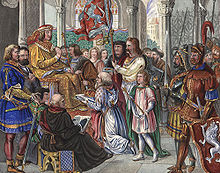
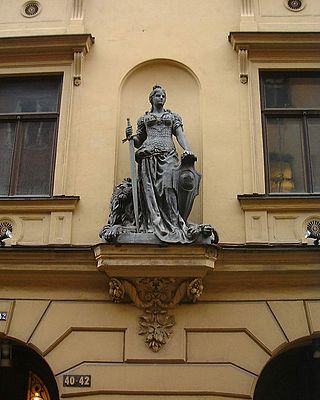
Mother Svea or Mother Swea is the female personification of Sweden and a patriotic emblem of the Swedish nation.
Lieutenant colonel (LtCol) (Swedish: Överstelöjtnant, Övlt) is a field grade officer rank in the Swedish Armed Forces, just above the rank of major and just below the rank of colonel. It is equivalent to the naval rank of commander in the Swedish Navy.
An army division or division was during the 1900s in the Swedish Army a designation for a larger military unit, comprising two or more brigades, an artillery regiment, an engineer battalion, an anti-aircraft battalion, a signal battalion and a transport battalion. An arméfördelning corresponds to a division in many countries' armies, and it has been common to also use the word "division" in Swedish when referring to foreign rather than Swedish military units. The last divisions were disbanded through the Defence Act of 2000 and were replaced between 2000 and 2004 as a transition period of the 1st Mechanized Division.

Fårösund Fortress is a decommissioned fortification in Fårösund on Gotland, Sweden, which was built from 1885 to 1886.
Johan Puke, was a Swedish officer. He was executed for treason as one of the conspirators participating in the failed coup d'etat of queen Louisa Ulrika, the Coup of 1756. Johan Puke was the father of Johan af Puke, a Swedish naval officer who participated in the Russo-Swedish War (1788–1790). In 1744 he became a Sargent in the artillery.

Artillery and Engineering College was a Swedish Army training establishment active between 1878 and 1992, providing courses for artillery officers. It was located within the Stockholm Garrison in Stockholm, Sweden.

Carl Adolf Cornelius was a German historian. In the context of the 1848 revolutions he was elected to the Frankfurt Parliament in 1848/49, after which he switched from the schools sector to the universities sector and built a reputation as a church historian.
Ministry of Land Defence was in a broad sense, one of the eight ministries, in which the Swedish government administration was divided into. Its head was called Minister of War. The Ministry of Land Defence Department was established on 16 May 1840 and was merged with the Ministry for Naval Affairs into the newly established Ministry of Defence on 30 June 1920.
Karlskrona Artillery Corps was a coastal artillery unit of the Swedish Navy which operated between 1893 and 1902. The unit was based in Karlskrona in Blekinge.
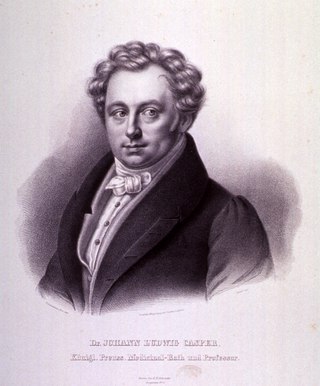
Johann Ludwig Casper was a German forensic scientist, criminologist, pathologist, pediatrician, pharmacologist, professor and author.

The Surgeon-General of the Swedish Armed Forces is the senior medical officer of the Swedish Armed Forces. The Surgeon-General is responsible for the supervision of the Swedish Armed Forces, the Defence Materiel Administration, the Swedish Fortifications Agency and the National Defence Radio Establishment. This includes supervision in the areas of environment, health, nature, sewage, waste and chemicals.
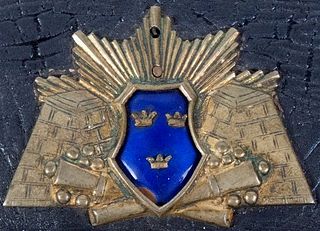
Vaxholm Artillery Corps was an artillery unit of the Swedish Army which operated between 1889 and 1901. The unit was based in Vaxholm in Uppland.
The Swedish Army Veterinary Corps was an administrative corps for veterinarians of the Swedish Army from 1887 to 1969. Its task was, in peace as well as in war, to provide army units etcetera with especially trained staff for veterinary positions in the army.
Underlöjtnant was the lowest officer rank in the Swedish Army from 1835 to 1937 instead of the previous ranks of fänrik and cornet. Fänrik was reintroduced in 1914 with the same position as underlöjtnant, from 1926 with lower position.

The Wachtmeister familyGerman pronunciation: [vaxtˈmaɪ̯stɐ] is a Swedish noble family from Livonia, who immigrated to Sweden in the 16th century. The name Wachtmeister is German for 'sergeant'.
The Riksidrottsförbundets idrottsmärke, or short: Idrottsmärke, was a Swedish sports badge that was created as a national decoration for physical fitness in 1907.
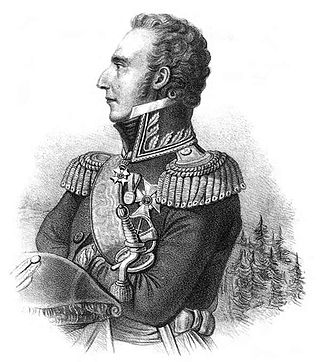
Eberhard Ernst Gotthard von Vegesack was a German-born officer in the Swedish Army who was active from the Russo-Swedish War to the Swedish–Norwegian War.
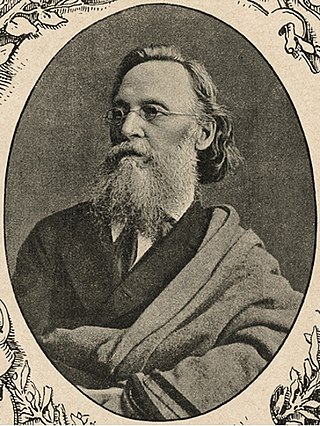
Alexander Strähuber or (Straehuber); (1814–1882) was an Austrian-born German history painter and book illustrator. From 1865 to 1882 he was a professor at the Royal Academy of Fine Arts in Munich.

Ivar August Heikel was a Finnish philologist and intellectual historian. He was the nephew of priest and educator Henrik Heikel. He was also the cousin of gymnastics teacher Viktor, educator Anna, banker and politician Felix, and ethnographer Axel Heikel as well as maternal grandfather to sociologist Erik Allardt.
Flag captain was in the Swedish Navy a captain or commander who served as deputy to a fleet commander. During the 1900s, the flag captain served as chief of staff of Flaggen, the staff of the Chief of the Coastal Fleet.